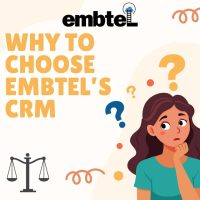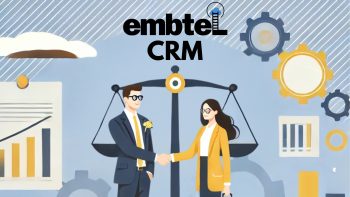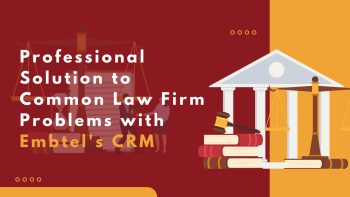If you’re not familiar with the term “micro commitments”, it is a very powerful persuasion technique based on Robert Cialidini’s commitment and consistency principle, which suggests people have a hard-wired desire to be consistent even after the original incentive or motivation is no longer present.
Essentially, instead of outright asking your prospect to make one big decision, you break it up in to smaller decisions to increase the likelihood you’ll get your main objective accomplished.
You’ve most likely encountered this online many times. Just take a look at the sidebar banners on most blogs. They almost always use “two-step” opt-in forms for generating leads because of this principle.
The micro–commitment strategy is built around finding ways to gain the customers agreement with little things during the course of the sales process. A micro–commitment might be as small as confirming a time for the next meeting or it could be more extensive by getting their feedback on a report.
Table of Contents
ToggleMicro-commitments serve several key purposes:
- Micro-commitments serve several key purposes: Micro-commitments let you slowly ease yourself into a prospect’s life. Micro-commitments create tangible next steps for the prospect to follow that pull them further into the funnel and increase the likelihood of a purchase. They let you collect “yeses.” Micro-commitments let you test engagement. Engagement is the biggest qualifier. Micro-commitments create value – with each investment of time or effort, the prospects are placing a slightly higher value on the process and the product or service and feeling more compelled to move towards an outcome.
- Micro-commitments serve several key purposes: Micro-commitments let you slowly ease yourself into a prospect’s life. Micro-commitments create tangible next steps for the prospect to follow that pull them further into the funnel and increase the likelihood of a purchase. They let you collect “yeses.” Micro-commitments let you test engagement. Engagement is the biggest qualifier. Micro-commitments create value – with each investment of time or effort, the prospects are placing a slightly higher value on the process and the product or service and feeling more compelled to move towards an outcome.
- Micro-commitments let you test engagement. Engagement is the biggest qualifier.
- Micro-commitments create value – with each investment of time or effort, the prospects are placing a slightly higher value on the process and the product or service and feeling more compelled to move towards an outcome.
Giving out their email address is a huge investment. Their name might have just as much value too.
So when they’re confronted by a form asking for both of these, along with a phone number, address or any other personal details, it’s not alarm bells ringing in their heads, it’s mega-sonic klaxons…
- Why do they need all the information?
- How are they going to use it?
- Is this some kind of scam or rip-off?
- How can I trust them?
These are just some of the questions swirling in their head when they’re gazing at your form. And once these questions trigger, you’ve already lost your prospect more often than not.
Big steps vs. small steps
You’ve probably heard the metaphor about the frog in boiling water, right? Put a frog in a pot of cold water and then slowly turn the temperature up, one degree at a time. The frog never realizes the threat, because it’s happening so gradually, and by the time the water is boiling, it’s too late for the poor frog.
our brain is trained to treat any new opportunity as a threat, which triggers the fight or flight response in your brain…
which simultaneously slows down or stops rational and creative thinking.
That means that any new opportunity or challenge triggers some degree of fear, and instead of rational thinking and seeing the potential for growth, the fear takes over.
opportunity a possibility due to a favorable combination of circumstances More (Definitions, Synonyms, Translation)
Contact us 5105856585 to Discuss with a strategist about Micro Commitments from Embtel Solutions, or keep reading to learn more about The Hidden Power Of Micro Commitments For Closing Local Clients
A Better way
Research shows that once someone has made a commitment, they’re more likely to follow through with the next step. It’s known as the “Commitment Bias” and you can make the most of it to get more sales, more engaged community members and more impact…
Our brains love questions. We also love the concept of self-discovery. Combine the two and you can instantly see why all the quizzes out there like “Which Game of Thrones Character are You” are so incredibly popular.
So if you can find a way to engage your prospects with small questions, you can gradually “turn up the heat” without triggering their fear response.
The key to Micro Commitments
Now, this idea of decision-making momentum isn’t new. It’s the reason behind a tripwire offer or breaking up a sales page into multiple pages. Each small decision builds momentum towards a bigger action.
But I’ve refined this process and added the elements of self-discovery and customization, so we are able to deliver a customized message and solution based on their response.
This gives people the feeling that you can read their mind, and understand their biggest problem, which is an incredibly powerful marketing tool.

4 Steps to use Micro-Commitments in your Emails
Now to apply some of this knowledge into some actionable steps that will allow you to use micro-commitments to improve your results when it comes to your E-mails Marketing Strategy:
1. Focused Subject lines
Your subject line has one job and that is to get your email opened. By opening your message, your subscriber is making a micro-commitment. They’re committing to seeing what you have to say. And you’ve got about 5 seconds once your email is opened to capture their attention.
Therefore, your email should have a single focus. It should have a single idea that you are trying to communicate. That could be that you have a time-limited special on a product.
OR It could be that you have a webinar coming up that you want subscribers to register for. And your big idea could be to raise your subscriber’s attention to a problem that you have a solution for.
2. Getting the click
If your body copy is focused on explaining briefly that there is a problem that your subscriber needs to know about, then the call to action is to learn more about the solution.
One way to do this is to offer compelling proof of the big idea that your subject line and email body copy revealed. That’s yet another micro-commitment that the reader has to make
3. Advancing the sales funnel
After you got that click, your main focus is to convince the user to make the next micro-commitment. A popular strategy, in this case, is to trade the email address of the user for a freebie. Maybe it’s an ebook, or maybe it’s a free tool.
Anything that will convince them to take the next step.
4. The offering
If the reader made last commitment, it’s very likely that they want the whole piece of the pie. If you’re selling a book and you previously given them a chapter for free, having the whole book is a safe, incremental decision.
And after they buy your book, it will be a relatively smaller decision to buy from you again in the future. If you have a higher-priced offer you can use this same principle to upsell your visitor if they buy the recipe book.
Note: Of course, the steps above are not exclusive to book selling marketers. You can customize your funnel to reflect whatever you’re selling.
8 Ways to use Micro-Commitments Effectively
1. Segmentation Questions Before Opt-in
For many people, entering their name and email address sets off all sorts of warning bells.
Even if you just ask for an email address, you’re still likely scaring some people off. It’s just too big of a first step to take.
Instead of having the opt-in box appear right away on your landing page, give them a button to click instead, with a pop up to either a quiz, or a one-question segmentation option, and only then ask for their name and email.
Button, question, and opt-in: Three steps instead of just one big one.
2. Using a Tripwire
It’s pretty accepted marketing wisdom that someone who spends a small amount of money with you is likely to spend a larger amount later on. Enter the concept of the Tripwire – a low priced (i.e. $1-10) product that puts your customers in “buying mode” without making them feel like they’re breaking the bank. If you don’t have a Tripwire offer yet, you might want to consider testing one.
3. Introduce a $1 Trial Offer
If you have a higher-priced product, then offering a $1 trial is a great way to turn prospects into buyers. In my experience, $1 trial offers are generally very hard to resist for your core audience.
4. Create a “Bridge Product”
If the price gap between your front-end and back-end products is too big, you may be setting off those warning bells in your customer’s brain. Just like I couldn’t make the leap from Folgers to Fair Trade Organic coffee if you have a $97 product on the front end that upsells into a $10K coaching program, it’s probably too big of a leap for most people.
Consider adding a mid-priced option in between the two offers instead.
5. Head off any potential objections at the pass
Make sure that before you ask for the sale, you have at least one opportunity to answer any potential objections. Usually, a FAQ section on your sales page does the trick, but they should also be woven into your sales copy as well.
Using the Ask Method “Do You Hate Me?” email is a great way to hone in on any potential objections and answer them effectively.
6. Use Live Chat
This is something that I discovered during my last launch of the Ask Method Master class.
Getting people to engage in a real-time chat is another form of Micro-Commitment and another great way to overcome objections.
7. “Objection-Busting” Webinars
During a launch or a promotion, I like to add a Q&A webinar (or two) into the mix.
Similar to live chat, it accomplishes the goal of getting your prospects to take another step into your world (by registering and then showing up for the webinar) and gives you another opportunity to answer their objections.
8. Get Subscribers to *HIT REPLY*
I often like to ask my subscribers to *HIT REPLY* and answer my emails directly.
This turns any old email into a survey AND a micro-commitment all at once. Just add a question in a P.S. or in the body of an email and ask people to *HIT REPLY*.
You’d be surprised at how many responses you’ll get.
Bottom Line
By making every step from the subject line to the upsell a series of small decisions, you can potentially convert a much higher number of buyers than if you had tried to sell the book or the upsell directly in the email campaign.
If building a whole new funnel sounds daunting, don’t worry. You can start with writing a subject line and take baby steps and before you know it you’ll be done and you’ll have a funnel that can convert open rates into sales.
Stay Tuned
That’s it for now.
But make sure you’re not missing out on any future free materials that we are going to release. We are working on some absolute gems at the moment, and I’ll hate to see you miss them.
To ensure that doesn’t happen, go to your email account and drag any of our emails from Updates / Promotions to Primary. Then, click Yes to ensure that you make our future emails as visible as possible.
If you are very busy and interested in using SEO Services to achieve your business’s goals, don’t hesitate to contact us! Our dedicated team of Internet marketers is more than happy to assist you with Micro Commitments Strategy, as well as all other aspects of your digital marketing efforts.










